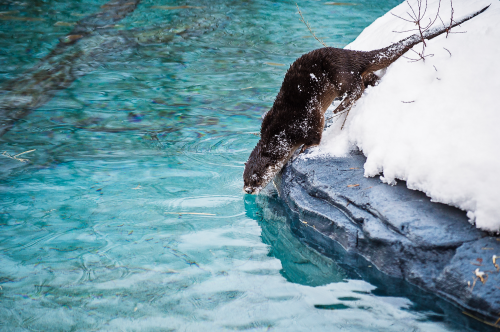
The Ecomuseum Zoo in Montreal, Canada, is home to the most impressive ambassadors of Quebec’s wildlife, all in need of specialist care. Yet the natural outdoor environment of its otter habitat causes contaminant build-up and turbidity, affecting water quality and the visitor experience. The zoo found a solution in a filtration system from a global water technology company. The Ecomuseum Zoo, a member of Canada’s Accredited Zoos and Aquariums (CAZA), opened its doors in 1988 and has been the recipient of a number of awards. All residents of the zoo are there because they are orphaned, injured or have been born in captivity and none of them would survive if they were returned to the wild. While always making animal welfare a priority, one of the goals of the Ecomuseum Zoo is to be a leader in environmental education and conservation of Quebec’s species and their habitats. As part of this goal, the zoo built a 6,000 ft2 river otter habitat. Costing CAD1.4 million, it’s the first of its kind in Canada and is made up of vast areas of land, river banks and a 250,000 litre (66,000 gallon) water basin.Visitors of the zoo can see the otters in action through a 15 m (50 ft) window, as well as an underwater viewing tunnel.
Contaminants & turbidity
The natural outdoor environment of the habitat was one of the first challenges faced by the Ecomuseum Zoo. Over time the water basin acts as an air scrubber, absorbing airborne contaminants and debris as they brush along the surface of the water. These contaminants can build up and create a film on various types of hard surfaces, potentially covering the viewing window and other surfaces found within the otter habitat.
The airborne contaminants and debris also increase the risk of experiencing higher levels of water turbidity. Such high levels of turbidity result in reduced water clarity, which further limits the learning experience for Ecomuseum Zoo visitors. Routine water basin cleaning would be costly, and the use of harmful chemicals is prohibited. The task was ultimately about the need to remove the fine particles before they have the chance to create concern. The environmental footprint of the mechanical equipment room posed a second challenge for both the zoo and the engineering consultants. With only a portion of the space dedicated to the water filtration system, application engineers needed to design a customized configuration.
Media filtration system
Evoqua was selected to supply a Vortisand cross-flow microsand media filtration system, a Vortisand H2F series 600 gpm (136 m3/h) unit, to filter the water circulating in the otter habitat and water basin. The Vortisand H2F series has high efficiency capabilities and a reduced footprint, making it a suitable solution for the Ecomuseum’s 3 m x 4 m mechanical equipment room. The system's high efficiency lies in its use of microsand and cross-flow filtration. Vortisand systems can capture particles under 1 micron in size, and the company claims,10 to 50 times smaller than particles retained by other media filters. The submicron filtration performance of the Vortisand filter helped remove fine particles that would otherwise make it impossible for visitors to see the otters through the viewing glass, portholes and underwater tunnel.
Exceptional level of care
With minimal maintenance and manual intervention required, the zoo employees are now able to focus their efforts on looking after the otters.David Rodrigue, executive director of the Ecomuseum Zoo, said: “Every effort is made to provide an exceptional level of care. We make animal welfare our number one priority, and this habitat is a faithful reflection of that choice. Nothing has been neglected to ensure that the river otters in our care have a safe, soothing and stimulating environment. We are very satisfied with the work achieved by Vortisand systems. Being able to work with such a high level product means a lot for our team’s efficiency and our animals’ well-being, two of our main concerns.”


